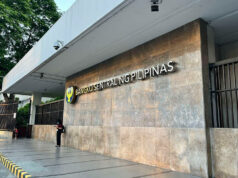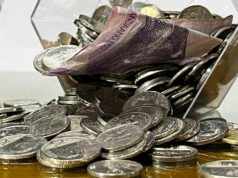Debt yields rise on fresh US stimulus
YIELDS ON government securities (GS) went up as investors reacted to additional US stimulus packages unveiled last week.
Bond yields — which move opposite to prices ‚ jumped by an average of 13.6 basis points (bps) week on week, according to the PHP Bloomberg Valuation Service Reference Rates as of June 19 published on the Philippine Dealing System’s website.
“Yields reacting to fading euphoria from US Federal Reserve stimulus measures with emerging markets struggling to find footing. Rise in yields capped by BSP (Bangko Sentral ng Pilipinas) bond purchase program,” ING Bank N.V. Manila Branch Senior Economist Nicholas Antonio T. Mapa said in an e-mail.
“[T]here was some boost over prospects of a planned $1-trillion infrastructure stimulus package by the US government,” a bond trader said in an e-mail.
Meanwhile, another trader said the increase in GS yields last week was due to lack of new leads.
“So market preferred to wait on the sidelines and turn their focus on any clues pertaining to the jumbo bond sale that was floated by the BTr (Bureau of the Treasury) early this month,” the second trader said.
The US Federal Reserve announced on Monday it would start buying corporate bonds as part of an earlier scheme to pump additional liquidity to its financial system.
Meanwhile, the Trump administration is preparing a nearly $1 trillion worth stimulus package, with the bulk of the total to be allocated to infrastructure projects such as roads and bridges to boost its economy, Reuters reported on Tuesday.
Based on the preliminary version of the US Department of Transportation’s package, it will also allocate a portion of that money for priority projects such as 5G wireless infrastructure and rural broadband, the report said.
Back home, National Treasurer Rosalia V. de Leon said earlier this month they were monitoring developments and the “risk-return tolerance of investors” as the BTr eyes a possible jumbo bond issue or another sale of retail Treasury bonds.
At the secondary market, GS yields rose across-the-board at the close of trading last Friday. Rates on three-month, six-month and one-year papers went up by 12.2 bps, 10.7 bps, and 18.6 bps, respectively, to 2.155%, 2.233%, and 2.598%.
At the belly, yields on the two-, three-, four-, five-, and seven-year bonds increased by 13.2 bps (to 2.622%), 16.3 bps (2.747%), 17.6 bps (2.852%), 16.9 bps (2.957%), and 10.8 bps (3.163%).
Yields on 10-, 20-, and 25-year debt climbed by 8.1 bps, 12.9 bps, and 12.4 bps, respectively, to 3.371%, 4.292%, and 4.396%.
For this week, all eyes will be on the central bank’s Monetary Board on Thursday, June 25, as it reviews its current policy settings.
BSP Governor Benjamin E. Diokno signaled on June 8 that key rates will likely remain unchanged as the central bank wants to have space in case of a worse coronavirus fallout.
Benchmark rates are currently at record lows as the central bank cut rates by a total of 125 bps so far this year to support the economy amid the pandemic.
The overnight reverse repurchase rate currently stands at 2.75%, while overnight deposit and lending rates are at 2.25% and 3.25%, respectively.
“Yields will take their cue from BSP [this] week with investors awaiting possible easing from Governor Benjamin E. Diokno,” Mr. Mapa said.
The first bond trader said local yields might move with an “upward bias” next week as BSP policy rates are likely to remain steady.
“Improving economic data from the US and eurozone, mainly on manufacturing and durable goods, might also drive investors away from fixed-income instruments [this] week,” the first trader said.
“We may continue to see yields move sideways with an upward bias especially on the five-year space and longer,” the second trader said.
The short-end of the curve remains “well supported” as there are market players looking for yield pickup, the trader added. — Lourdes O. Pilar



